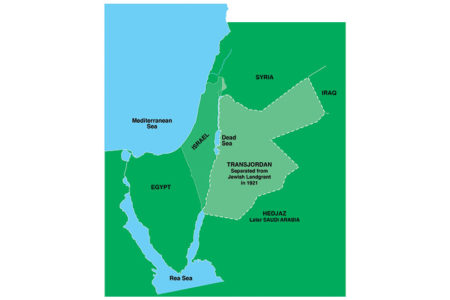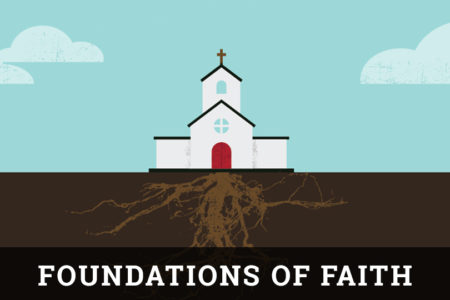Turning Homeward
Thus saith the Lord Gᴏᴅ: Behold, I will take the children of Israel from among the nations, to which they are gone, and will gather them on every side, and bring them into their own land. And I will make them one nation in the land upon the mountains of Israel (Ezek. 37:21–22a).
One of the more phenomenal events of the 20th century is the regathering of the Jewish people to the land of Israel and the rebirth of the nation. Scattered among the nations of the world for almost two millennia, they were persecuted as no other people were during that time with nation after nation attempting to destroy them, yet they exist today as a national entity in their ancient homeland. The establishment of the State of Israel in 1948 stands as one of the more amazing events in the history of the world.
Jewish people from more than a hundred countries have come to Israel to be a part of the rebirth of the nation. The events and processes that contributed to that rebirth are nothing short of miraculous.
The process of repopulating the land of Israel is called aliyah. It is the immigration of Jewish people from all over the world to Israel. The word literally means to go up. But aliyah has a much greater meaning than just immigration. It implies personal involvement in rebuilding the Jewish homeland and elevation of individuals to a higher plane of spirituality or morality by living in Israel.*
There has been a continual Jewish presence in the land of Israel since the time of King David. The scattering of the Jewish people into the nations of the world in 70 and 135 A.D. resulted in the Jewish population of the land shrinking at times, and they were always under the control of an occupying power. In the 1800s a return began that ultimately resulted in the founding of the nation in 1948. There are seven recognized periods of aliyah from 1892 to 1948. Each of these returns played an instrumental part in repopulating the land and the subsequent rebirth of Israel.
First Aliyah: 1882–1904
The first aliyah to the land of Israel resulted in the return of 25,000 people. This group was composed mostly of Eastern Europeans who came individually or in small groups.
Bukharan Jews began to immigrate to Israel in 1868. In 1892 they founded the Bukharan Quarter of Jerusalem, which they named Rehovot.
In 1881 Yemen was making life miserable for the Jewish people in that nation. The harsh conditions of Jewish life and a rising messianic fervor propelled the Jewish community to begin immigrating to Israel. By 1914 about 3,000 (approximately 10 percent) of Yemen’s Jewish community made aliyah.
The first settlement in Israel established by pioneers from outside the country took place in 1882. Ten Russian Jews founded the Rishon Le-Zion moshav. This settlement’s population grew to about a hundred after the first year, when Bilu settlers joined the moshav. Bilu, the Hebrew initials for “House of Jacob, come ye and let us go,” was a return-to-Israel movement.
Second Aliyah: 1904–1914
In 1905, 43 pogroms (organized massacres of Jewish people) took place in Russia. During one week, government-inspired pogroms were carried out in 660 Russian Jewish communities. The result of that week of devastation was 1,000 dead and approximately 8,000 wounded.
The year 1905 also saw the first edition of The Protocols of the Elders of Zion published in Russia. This anti-Semitic forgery claimed that there was an international Jewish conspiracy seeking to dominate the world.
These anti-Semitic incidents formed the impetus that sent 40,000 Russian Jews to Israel. Interestingly, similar types of incidents in Russia during the late 1980s led to the greatest emigration of Jewish people from one country into Israel since Moses and the Egyptian exodus.
Third Aliyah: 1919–1923
In the third aliyah about 35,000 Jewish people returned to Israel. Many of them were young visionaries from the areas of Russia, Poland, and Romania.
Ladislav Grabski, Prime Minister of Poland from 1923 to 1925, introduced a system of taxation and economic policies that imposed severe financial hardships on Jewish merchants and shopkeepers. These hardships bankrupted many Jewish families and drove some of them to Israel. The continuing pogroms in Russia drove additional Jews out of Russia to Israel.
Fourth Aliyah: 1924–1932
The United States’ almost total shutdown of permissible emigration from Poland sent many Polish Jews to Israel. In 1925 alone, nearly 35,000 Jews, most from Poland, went to Israel. These immigrants settled mainly in the cities. Tel Aviv’s population exploded from 16,500 in 1923 to 40,000 by the end of 1925. This immigration was the result of the previously imposed economic sanctions by Prime Minister Grabski.
This particular aliyah involved approximately 88,450 Jewish people, most of them from Poland. About 9,000 Sephardic and Oriental Jews from Turkey, Bulgaria, and Yemen also immigrated at that time.
Fifth Aliyah: 1933–1939
The rise of Nazism in Germany had a great influence on aliyah during this period. As the Nazi influence spread, violent anti-Semitism reared its ugly head in many European countries.
This persecution drove approximately 215,000 Jews back to Israel. Germany contributed about 60,000 and Poland more than 90,000 to the repopulation of Israel. This aliyah also included more than 15,000 Sephardic and Oriental Jews from Yemen, Turkey, and Bulgaria. Tragically, many more Jewish people died in the Holocaust than made aliyah.
This influx of immigrants changed the face of many cities in Israel. Tel Aviv, with a population of 50,000 in 1931, had 150,000 residents by 1935.
Sixth Aliyah: 1939–1945
In the sixth aliyah, 62,531 Jews immigrated to Israel. Most of them were refugees from Nazi Europe. About 15,000 were Sephardic and Oriental Jews from Yemen, Turkey, and Bulgaria.
One hindrance to aliyah at that time was the infamous MacDonald White Paper, introduced by British Colonial Secretary Malcolm MacDonald in 1939. This edict from the controlling British regime limited Jewish immigration into Israel to 75,000 over the next five years.
Seventh Aliyah: 1946-May 15, 1948
The final aliyah to Israel before the creation of the State totaled 56,476. These people were mostly European Holocaust survivors.
With the birth of the State of Israel on May 15, 1948, the country had a population of approximately 600,000. The subsequent defeat of the Arab nations in the War of Independence led to a great ingathering of Jewish people into Israel. This ingathering is referred to in Hebrew as Kibbutz Galuyot, the Ingathering of the Exiles.
Kibbutz Galuyot
This ingathering of the exiles took on almost biblical proportions. By June 1951 Israel’s population grew to 1,330,000, doubling in size.
Most of these immigrants were from two groups: refugees from the Holocaust, and approximately 600,000 Jewish people evicted by Israel’s surrounding Arab neighbors as a result of their loss in the War of Independence.
One of the more famous of the exodus undertakings was “Operation Magic Carpet.” The Jews of Yemen were not permitted to emigrate. Most of that country’s Jewish community, about 45,000, traveled overland to Aden and were joined by 3,000 Aden Jews. In a bold move, Israel airlifted these 48,000 Jews to Israel.
“Operation Ali Baba” was the largest air emigration ever undertaken. From March through December 1951 Iraq allowed 120,000 Jews to immigrate to Israel.
From 1948 through 1951 approximately 684,000 Jewish people immigrated to Israel. From 1955 through 1957 an additional influx of about 161,000 people arrived, while from 1961 through 1964 about 220,000 Jewish people joined them. In the first two decades of the new State’s existence, more than 1,250,000 Jewish people made aliyah. Most of them were from Europe, North Africa, and the Middle East.
Operations Moses And Solomon
With the overthrow of Emperor Haile Selassie in 1974, Ethiopia adopted a Marxist government, and the Jewish community experienced extreme persecution. From late 1984 through January 1985 Israel launched a program known as “Operation Moses” to secretly smuggle as many Jews out of Ethiopia as possible. When the media prematurely reported this exodus, Ethiopia put an immediate stop to the rescue.
Living conditions for the Jewish community in Ethiopia continued to deteriorate, and the situation became unbearable. Finally, on May 24 and 25, 1991, “Operation Solomon” was launched. During a 33-hour period, more than 14,000 Ethiopian Jews were airlifted from the capital of Addis Ababa to Israel. Planes were taking off and landing one after another. Miraculously, not one plane crashed, nor was one life lost in that amazing airlift.
Russian Jewish Aliyah
A series of events beginning in the late 1980s resulted in the demise of the Soviet Union in December 1991. For years Jewish people in the West, along with their Gentile supporters, had been marching and lobbying for the release of the Soviet Jews. Their prayers were answered with the lowering of the hammer and sickle from the Kremlin flagpole.
Internal chaos was the order of the day, as the old Soviet Union was separated into independent states. Food shortages, lack of job opportunities, and other harsh conditions made conditions ripe for the rise of such groups as the anti-Semitic Pamyat, which blamed the region’s problems on the Jewish people.
These harsh conditions in the Commonwealth of Independent States (the newly formed attempt at a loose connection of the former Soviet Union republics) and the increasing anti-Semitism of the citizens resulted in a huge emigration of Jewish people. Thousands went to the United States and other countries, but the vast majority (approximately 600,000 by 1995) went to Israel.
The Hand Of God
The prophets of Israel spoke over and over about a day when the Jewish people would return to their land from worldwide dispersion. God promised that Israel would be established again among the nations of the world.
The return of Jewish people to the land and the subsequent establishment of the State of Israel powerfully proclaim that the God of the Jews rules and that His book, the Bible, is true and reliable.
The modern-day history of Israel is not only evidence for the accuracy of the Bible but a reminder that the Messiah will one day come back to Israel, for the same prophets who spoke of the return of the Jews to the land also spoke of the return of the Messiah to that reestablished nation.








